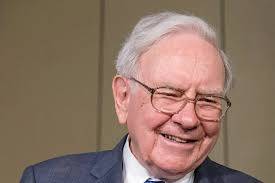Warren Buffett is an American business magnate, investor, and philanthropist, widely regarded as one of the most successful investors of all time. As the chairman and CEO of Berkshire Hathaway, Buffett has built a multibillion-dollar conglomerate and amassed a personal fortune that consistently ranks him among the world’s wealthiest individuals. Known as the “Oracle of Omaha,†Buffett is celebrated for his value investing philosophy and his long-term approach to business.
Early Life and Education:
Warren Edward Buffett was born on August 30, 1930, in Omaha, Nebraska. He was the second of three children born to Howard Buffett, a stockbroker and later a U.S. Congressman, and Leila Stahl Buffett. From a young age, Buffett demonstrated an aptitude for numbers and business. He made his first stock purchase at the age of 11, buying Cities Service preferred stock, and by his teenage years, he was running small businesses such as selling chewing gum, delivering newspapers, and operating pinball machines.
Buffett attended Woodrow Wilson High School in Washington, D.C., while his father served in Congress. He later enrolled at the University of Pennsylvania at the age of 16, transferring after two years to the University of Nebraska, where he graduated with a degree in business administration. In 1951, he earned a master’s degree in economics from Columbia Business School, where he was influenced by two key figures: Benjamin Graham, the father of value investing, and David Dodd. Buffett credits much of his investment philosophy to Graham, particularly the principles outlined in Graham’s book, “The Intelligent Investor.â€
Early Career and Investment Philosophy:
After completing his education, Buffett worked for his father’s brokerage firm and later as an investment salesman. In 1954, he took a job at Benjamin Graham’s investment partnership in New York, where he honed his skills in value investing—buying stocks that appear undervalued relative to their intrinsic value.
In 1956, after Graham retired, Buffett returned to Omaha and started his own investment firm, Buffett Partnership, Ltd. His strategy was simple: invest in undervalued companies and hold them for the long term. By the early 1960s, Buffett had grown his partnership to millions of dollars in assets, consistently outperforming the market. His investment approach, focusing on the long-term value of companies rather than short-term stock market fluctuations, was a hallmark of his success.
Acquisition of Berkshire Hathaway:
In 1962, Buffett began buying shares in a struggling textile manufacturing company called Berkshire Hathaway. By 1965, he had taken control of the company, initially intending to turn it around. However, recognizing that the textile industry was in decline, Buffett shifted Berkshire Hathaway’s focus to investments in other industries, particularly insurance, which provided steady cash flow for future investments.
Under Buffett’s leadership, Berkshire Hathaway became a diversified holding company, acquiring businesses across multiple sectors, including GEICO, Dairy Queen, Fruit of the Loom, BNSF Railway, See’s Candies, and Nebraska Furniture Mart, among others. Buffett also made significant investments in public companies like Coca-Cola, Apple, American Express, and The Washington Post.
Buffett’s investment philosophy centers on identifying companies with strong management, simple business models, and long-term competitive advantages, which he refers to as “economic moats.â€


